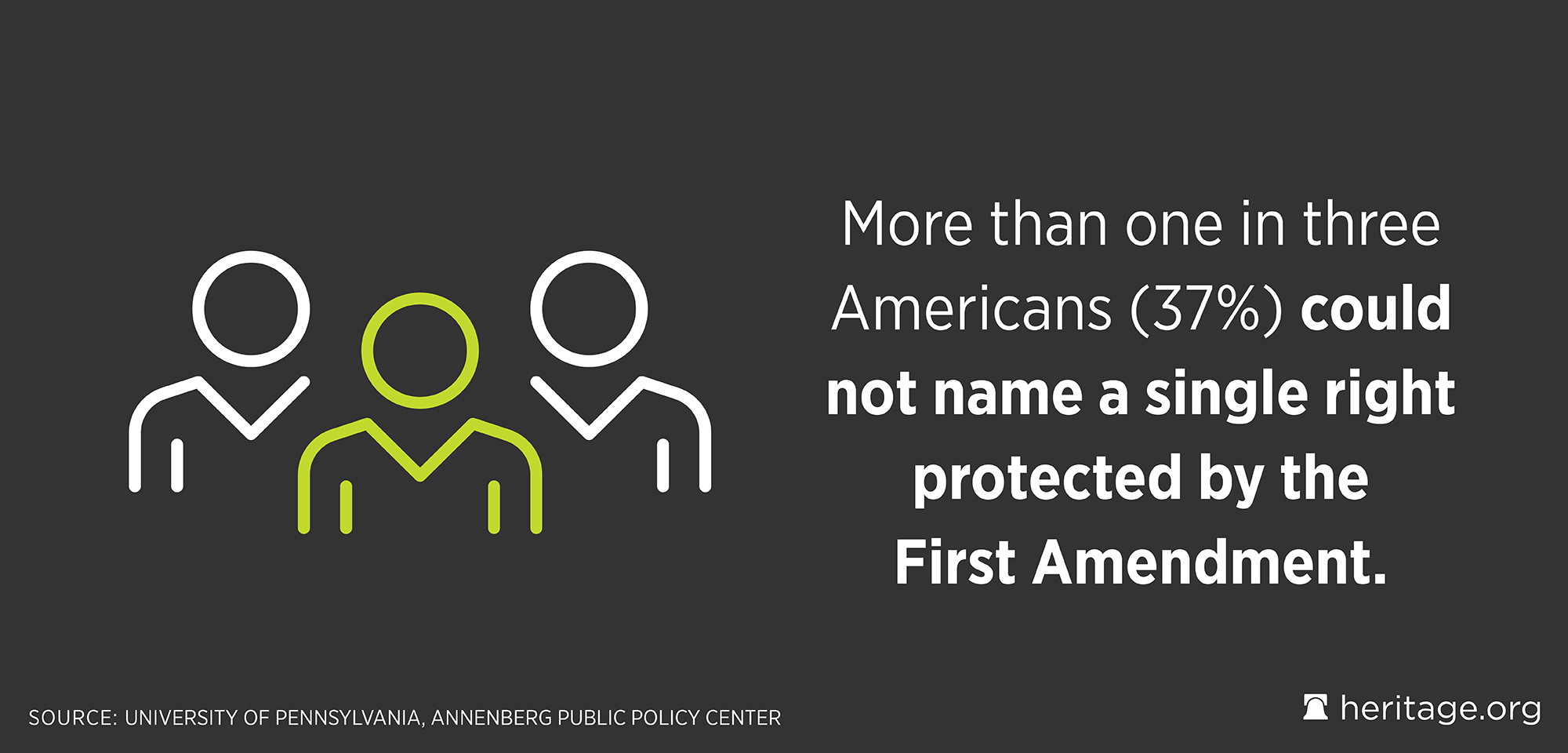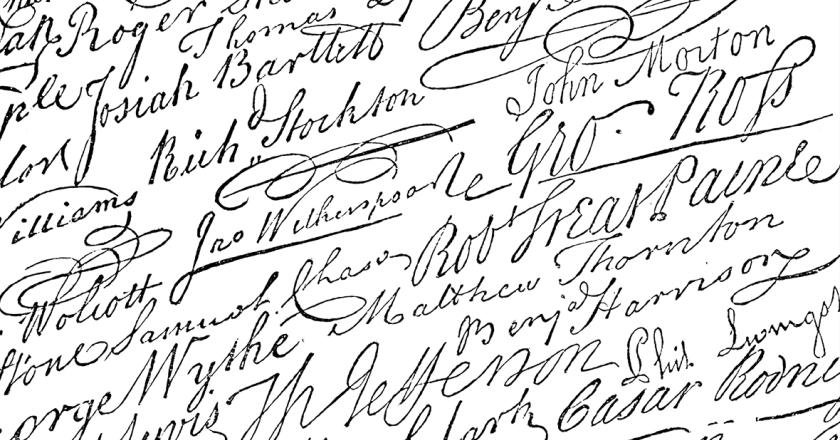Because the people use the Constitution to remain the masters of government, the most serious threats to the Constitution are the ones that allow government to ignore rather than follow it. These threats can come from each of the three branches of government.
The “Living Constitution” and Judicial Activism
Recall that the Constitution is the meaning of its words. Judges cannot change the Constitution’s words, but they threaten the Constitution just as much by changing what those words mean. Rather than seeking to understand what the Constitution’s authors meant, some activist judges, under the guise of interpretation, substitute what they want the Constitution to mean as if they were creating a different Constitution in their own image. These judges and those scholars who support them are sometimes referred to as “living constitutionalists” because they believe that the Constitution is an ever-changing and evolving document that should bend to the whims of public opinion and contemporary society’s values.
In 1937, Justice George Sutherland warned that this might happen, explaining that while courts have the power of interpretation, they do not have the power of “amendment in the guise of interpretation.”30 By maintaining this distinction, courts can respect the fact that the Constitution belongs to the people and not to government.
The notion of a “living Constitution” is antithetical to our Founding Fathers’ intention for the limited role of the judiciary. It abandons the principle of government by consent and replaces it with arbitrary rule. The role of judges is to interpret the Constitution, not to make law.
In the 1980s, then-Attorney General Edwin Meese warned that abandoning originalism would threaten the Constitution. Substituting vague ideas about the Constitution’s “spirit” for the concrete meaning of its words, he said, treats the Constitution “as an empty vessel into which each generation may pour its passion and prejudice.”31 A judge who will not seek to find the Constitution’s meaning from “the authority that made it” will look “inside himself and nowhere else.”32
President Ronald Reagan made this point when he administered the oath of judicial office to Supreme Court Justice Anthony Kennedy. “[T]he framers knew,” Reagan said, that “unless judges are bound by the text of the Constitution, we will, in fact, no longer have a government of laws, but of men and women who are judges.”33

Attempts to “Pack” the Supreme Court
Another threat to the Constitution comes from the legislative and executive branches working together to “pack the courts.” Presidents, with Senate approval, can fill judicial vacancies, but they cannot control when those vacancies occur. “Packing” happens when Congress creates additional judicial positions, and therefore new vacancies, so that a President of the same party can quickly fill them. These new positions are not created, nor are they needed, to enable courts to handle their workload. Rather, they are created to pack the courts with judges who will likely change the meaning of the Constitution and statutes “in the guise of interpretation” to better suit the political needs of the party that created positions in the first place.
The term “court packing” was coined in 1937, when President Franklin Roosevelt wanted to move quickly to add new federal judges, especially to the Supreme Court, who would approve his New Deal legislation. The plan could have increased the Supreme Court’s membership from its current nine to 15. Even with Roosevelt’s party solidly in control, however, Congress said no. The Senate Judiciary Committee’s report on Roosevelt’s bill called it a “dangerous abandonment of constitutional principle” that “violates every sacred tradition of American democracy.”34 The committee said that the long-term independence of the judicial branch was more important than any immediate political objective.
Today, some politicians and activists want Congress to do the same thing, and for the same reason, that Roosevelt attempted. The political branches would then control not only who is appointed to fill judicial vacancies, but when and where those vacancies occur. This would fatally politicize the courts and threaten the Constitution.

The Growth of the Federal Government—The Administrative State
Another threat to the Constitution involves all three branches of government. The Framers separated government power into those branches, allowing the President to appoint “Officers of the United States” to staff various “executive Departments.” Congress initially created only three small departments of State, War, and Treasury. As recently as 1900, there were only eight departments, and two-thirds of the federal workforce was employed by the Post Office or General Lands Office.35 Today, approximately 120 executive agencies and another 60 independent entities employ more than one million federal workers.36
The growing administrative state threatens the Constitution because all three branches have worked together to undermine the separation of powers. This happened in a few steps. First, through a series of cases, the Supreme Court changed the meaning of the powers granted to Congress by the Constitution. For example, Congress’s power to regulate interstate “commerce” (commercial activity between two states) now includes regulating whatever might “affect” commerce even if that commercial activity takes place wholly within one state. But the management and implementation of these regulations is in the hands of administrative agencies, which means that this expanded congressional power has been passed along to the executive branch in ways that the Framers could not have imagined and certainly did not intend.
Second, Congress has expanded its own opinion about what it can accomplish, believing that so-called experts can solve virtually any problem. As a result, Congress gives administrative agencies not only the responsibility to carry out Congress’s programs, but also the authority to come up with programs and rules themselves. These rules and programs often end up having the force of law, obligating all of us to comply with them or face civil or criminal penalties if we don’t. Congress often gives such legislative authority to executive branch agencies that are run by unelected and unaccountable government employees with only the vaguest of instructions—for example, to devise rules that serve “the public interest, convenience, or necessity.” This violates the separation of powers which protects our individual liberties.
Third, both the Supreme Court and Congress have cemented this rearrangement of government powers. The Court, for example, says that an agency’s own interpretation of an ambiguous or uncertain statute, even if it is wrong, must be followed so long as it is “reasonable.”37 Congress has also created new agencies but limited the President’s ability to change their leadership and thereby hold those officials accountable, and courts have upheld this arrangement.38 These actions by the Court and Congress have helped to create what Justice Robert Jackson described as “a veritable fourth branch of Government.”39
Fourth, by interpreting statutes, writing substantive regulations based on those interpretations, enforcing those regulations, and in essence acting as judges and juries in lawsuits or enforcement actions involving those regulations, administrative agencies often wield all three powers—to make law, to enforce law, and to interpret law—with little, if any, democratic oversight. This is precisely the “accumulation of all powers, legislative, executive, and judiciary, in the same hands” that James Madison called “the very definition of tyranny.”40

The Power of the Presidency
Sometimes the President himself assumes power that the Constitution does not give him. These unconstitutional power grabs undermine the principles of limited government that are at the heart of the Constitution.
Consider, for example, President Harry Truman’s attempt to nationalize several steel mills during the Korean War.41 The Constitution does not give the President the power to take over businesses, and Congress had not passed a law granting the President that power, but Truman claimed that the power was “inherent” in the presidency. The Supreme Court rightly disagreed, recalling the Framers’ “fears of power and the hopes for freedom” upon which they based their decision to limit and separate power.42
In the past few decades, it has become increasingly common for Presidents to push their agendas by executive action rather than by working with Congress to pass legislation. Not only does this risk undermining the separation of powers, but it also decreases the government’s ability to govern effectively as laws and policies become unstable and subject to being reversed with each new administration.
ENDNOTES:
30. West Coast Hotel Co. v. Parrish, 300 U.S. 379, 404 (1937).
31. Edwin Meese III, “The Originalism Revolution Turns 30: Evaluating Its Impact and Future Influence on the Law,” Heritage Foundation Special Report No. 191, January 26, 2017, p. 16, https://www.heritage.org/the-constitution/report/the-originalism-revolution-turns-30-evaluating-its-impact-and-future.
32. Robert H. Bork, “Keeping a Republic: Overcoming the Corrupted Judiciary,” Heritage Foundation Lecture No. 1147, February 24, 2010 (delivered October 15, 2008), p. 4, https://www.heritage.org/political-process/report/keeping-republic-overcoming-the-corrupted-judiciary.
33. Ronald Reagan, “Remarks at the Swearing-In Ceremony for Anthony M. Kennedy as an Associate Justice of the Supreme Court of the United States,” February 18, 1988, https://www.reaganlibrary.gov/archives/speech/remarks-swearing-ceremony-anthony-m-kennedy-associate-justice-supreme-court-united (accessed May 20, 2021).
34. Report No. 711, Reorganization of the Federal Judiciary, Committee on the Judiciary, U.S. Senate, 75th Cong., 1st Sess. June 7, 1937, p. 23, https://reason.com/wp-content/uploads/2020/10/Senate-Judiciary-Committee-Report-on-1937-Court-Packing-Legislation.pdf (accessed May 21, 2021).
35. Matthew A. Crenson, The Federal Machine: Beginnings of Bureaucracy in Jacksonian America (Baltimore: Johns Hopkins University Press, 1975), p. xi.
36. Joanna L. Grisinger, The Unwieldy American State: Administrative Politics Since the New Deal (New York: Cambridge University Press, 2012); Kevin R. Kosar, “How to Strengthen Congress,” National Affairs, Vol. 25 (Fall 2015), https://www.nationalaffairs.com/publications/detail/how-to-strengthen-congress (accessed May 20, 2021).
37. See, e.g., Chevron U.S.A., Inc. v. Natural Resources Defense Council, Inc., 467 U.S. 837 (1984); Kisor v. Wilkie, 139 S. Ct. 2400 (2019).
38. See, e.g., Morrison v. Olson, 487 U.S. 654 (1988).
39. FTC v. Ruberoid Co., 343 U.S. 470, 487 (1952) (Jackson, J., dissenting) (“The rise of administrative bodies probably has been the most significant legal trend of the last century and perhaps more values today are affected by their decisions than by those of all the courts, review of administrative decisions apart. They also have begun to have important consequences on personal rights…. They have become a veritable fourth branch of the Government, which has deranged our three-branch legal theories much as the concept of a fourth dimension unsettles our three-dimensional thinking.”) (citation omitted).
40. Federalist No. 47.
41. Youngstown Sheet & Tube Co. v. Sawyer, 343 U.S. 579 (1952).
42. Ibid., p. 589.
43. University of Pennsylvania, Annenberg Public Policy Center, “Americans Are Poorly Informed About Basic Constitutional Provisions,” September 12, 2017, https://www.annenbergpublicpolicycenter.org/americans-are-poorly-informed-about-basic-constitutional-provisions/ (accessed May 20, 2021).

